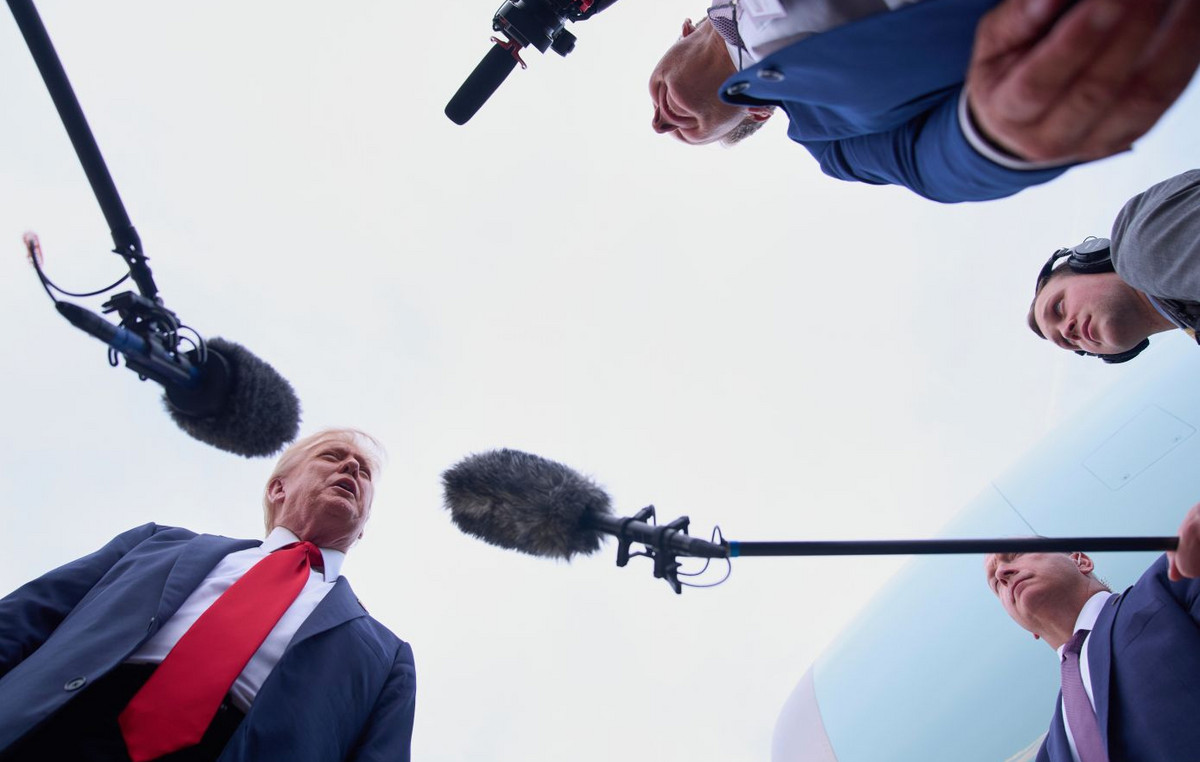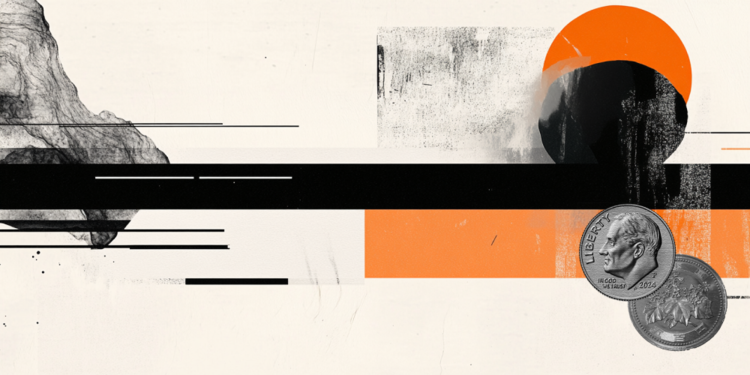It’s one thing to stand in line to watch the blockbuster film “Oppenheimer.” Another completely unique thing is lining up in a remote desert to visit the location of the film’s most important scene.
But if you’re a fan of atomic history and can visit central New Mexico in the United States in October, your Jornada del Muerto (Dead Man’s Journey) pilgrimage will be well worth it.
Saturday, October 21st, presents a rare opportunity to visit not just one, but two scientifically significant and film-famous destinations on the same day – each occupying opposite ends of the electromagnetic spectrum.
Trinity Site is the historic landmark that hosted humanity’s first nuclear explosion on July 16, 1945, where gamma rays from plutonium lit up the night sky. Only two open events are hosted at this location per year.
And while you’re in the area, an awesome bonus is a second free open house aimed specifically at Trinity Site adventurers who are willing to drive an extra 100 miles for a second mind-blowing experience.
It’s the Very Large Array Radio Observatory (VLA), which was dramatized in the 1997 film about alien life “Contact.” The VLA telescope could expand beyond New York City, being able to pick up the whispers of distant radio waves as they ripple through our cosmos.
Rare access to the Trinity Site

The Trinity Site is only open two Saturdays a year. Once in April, and luckily for “Oppenheimer” enthusiasts, again in October. Exact dates are announced in advance each year by the US Army.
The location is a secure military installation within the forbidden White Sands Missile Range, where real weapons are regularly tested. The terrain is a high desert plateau, dotted with creosote bushes and nothing else.
In our daily crush of crowds, traffic and shopping malls, the Land of Enchantment’s miles of open landscape and cobalt vistas inspire. Buzz Aldrin’s impression of the Moon’s surface parallels the Trinity Site, a “magnificent desolation.”
When J. Robert Oppenheimer, the theoretical physicist known as the “father of the atomic bomb,” led his Manhattan Project team to Trinity, it wasn’t just for isolation. He had a history with New Mexico, attending boys’ summer camps during his youth.

Due to the popularity of the film “Oppenheimer”, an increase in visitors is expected on October 21st. The open event, organized by the US Army, is free, but limited to the first 5,000 visitors, on a first-come, first-served basis.
How to get there
From Albuquerque Sunport International Airport, your best option is to rent a car for the two-hour drive south. It’s easy to get lost while traveling, so follow Army instructions as GPS instructions can be unstable. Take photos of the mapped route on your phone – you might lose cell service – and have a physical map as a second option.
Try to arrive at Trinity’s Stallion Gate before 8am, when the gate opens. There will already be a queue. Arrive early and you’ll still have plenty of time for the second adventure of the day. Army officers will check your identity at the gate and from there it’s a 27 kilometer journey to a car park located a 400 meter walk from the reason you came – Ground Zero.
The atmosphere at the Trinity Site during an open house is reminiscent of a small-town carnival from a bygone era. Vendors offering souvenir trinkets. Children in strollers. Dogs wagging their tails. That is until you notice the tent displaying Geiger counters. And another with radioactive Trinitite, the mysterious green glass rock that rained down when the bomb exploded.

Ominous signs on the fence remind guests that it is against the law to remove any pieces of Trinitite they find in the ground, because ingested fragments retain enough radioactivity to be dangerous.
The famous 1918 McDonald Ranch House, where the bomb’s critical plutonium core was assembled in the master bedroom, survived the blast wave two miles away, largely intact. Buses transport visitors free of charge from the Trinity parking lot to the McDonald House.
Venture further afield and stand next to a life-size replica of Fat Man, the nuclear bomb dropped on Nagasaki, Japan on August 9, 1945.
Visitors can pose for photos inside the Jumbo, the 216-ton steel cylinder that scientists considered detonating the bomb – nicknamed the Gadget – to contain its plutonium core if full detonation failed.
Visiting Ground Zero

The time has come to approach Ground Zero, simply marked by a 3.66 meter high black stone obelisk.
Go back in time to the early morning hours of July 16, 1945. Look to the north, west and south, where Oppenheimer’s team was hunkered down in three bunkers, five miles away. You are where the course of humanity changed. Where the limits of physics and possibilities stretched.
Imagine the 30-meter-high steel tower that stood where the obelisk stands today. A few meters away, only parts of the tower remain, most of which was annihilated in the explosion. See in your mind the mattresses pulled and stacked to break the fall in case the chains break while lifting the heavy Gadget into the air.

Young scientists took turns at night tending the bomb while cracks of lightning threatened. Oppenheimer wrote the poem “Crossing” two decades before Trinity. His words contained the prophetic passage: “…on the dry hills by the river, half withered, we had hot winds against us.” He could not have imagined the heat that would reverberate.
Now close your eyes. Ignore what you see to imagine the story you can’t see. Storms over the mountains. New Mexico Governor John Dempsey at home sleeping, not knowing when the explosion will occur. Finally, the rain fog dissipates. The countdown begins. There is a sense of dread, however remote, that Earth’s atmosphere could ignite in a cataclysmic chain reaction.
And finally, the detonation. The first nuclear genie breaks its bottle, releasing the ferocity of the atom, with an explosion 10,000 times hotter than our sun. Thirty-seven minutes later, the wounded sky lights up again, at the dawn of man’s first atomic sunrise.

Reflect on the glaring omission that although the area around Trinity was remote, it was not unpopulated.
Civilians living nearby, subject to the radioactive fallout falling from the sky, were assured that the flash and fury that some saw and heard was an ammunition explosion at the nearby Alamogordo Air Base. After atomic bombs were dropped on Hiroshima and Nagasaki the following month, they recognized the harsh truth.
Jim Eckles, an Army historian who oversaw decades of Trinity open events, shared the site’s significance: “The film ‘Oppenheimer’ resurrected concerns we had lost sight of. That thousands of missiles with nuclear warheads are still out there, capable of being launched. We need smart, wise people to deal with the sequence that began at Trinity.”
Traveling to the edges of the galaxy

After experiencing Trinity’s solemn inner journey, it’s time to regroup and explore the outer – to the hopeful fringes of the galaxy. The world’s most impressive radio telescope – the Very Large Array – is also free to visitors on October 21st.
Take Highway 380 back to Interstate 25 and the route to the VLA, 50 miles west of Socorro, is well marked.
Along the way, you can stop for lunch at the same bar frequented by Oppenheimer’s team, the Owl Bar & Café in San Antonio. New Mexico recently designated the sweet aroma of roasted green peppers as the state’s official flavor, and you can taste them in their famous Owl burgers.
Driving west past Socorro, the elevation increases. The VLA sits more than 7,000 feet high in the plains of San Agustin, surrounded by a fortress of mountains to block radio interference from civilization as astronomers search the depths of the sky.

“People find the first glimpse of antennas on the sprawling desert plain inspiring,” said Patricia Henning, director of the VLA.
Each of the 27 colossal dishes measures 25 meters in diameter and is motorized to rotate and tilt. Mounted on train tracks, they can spread for miles in their iconic “Y” shape. According to Henning, the more the matrix stretches its arms, the bigger the eye becomes to magnify.
Most people are familiar with traditional telescopes that collect light. But the VLA captures naturally occurring radio waves from objects in space, billions of times weaker than transmitted radio waves, and then turns them electronically into images.
It is the most widely used radio telescope in the world, mapping the cosmos from our solar system and the Milky Way to distant gas clouds and plasma expulsion from supermassive black holes.
Source: CNN Brasil
I’m Robert Neff, a professional writer and editor. I specialize in the entertainment section, providing up-to-date coverage on the latest developments in film, television and music. My work has been featured on World Stock Market and other prominent publications.







